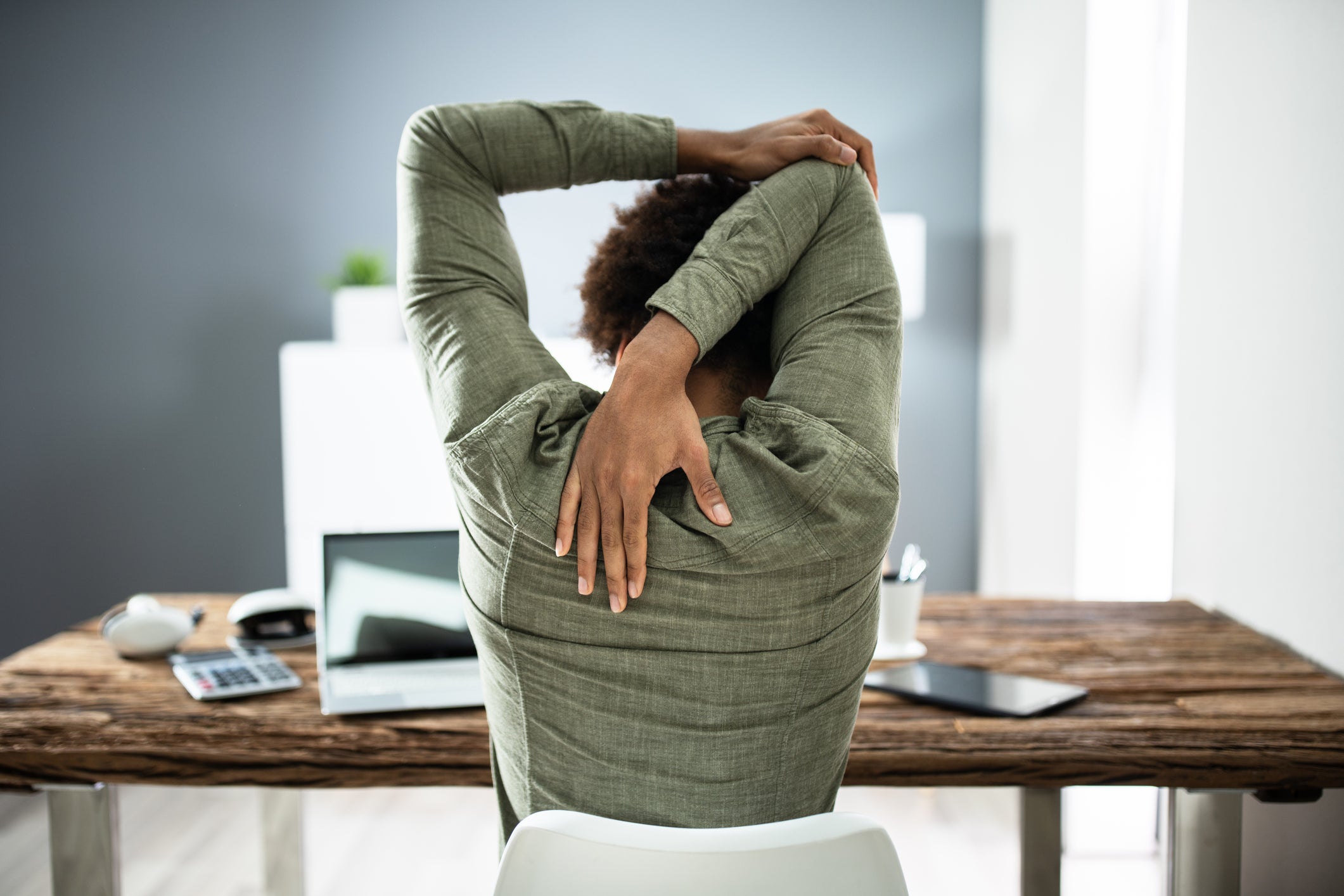Signs you’re not stretching enough
Suffering from poor posture or aches and pains? It might be time to adopt a regular stretching regime says Prudence Wade.

Stretching is hardly the sexiest part of anyone’s routine. Whether or not you’re a fitness buff, it’s the kind of thing we know we should be doing, but often find hard to fit into our busy lives.
However, we’re here to remind you that you really shouldn’t skip it. “Stretching is an integral part of our fitness and health,” explains Michelle Njagi, senior physiotherapist at Bupa Health Clinics. “Stretching is really important because it keeps muscles flexible, it keeps them healthy and strong, and it’s really important for the range of movement in the joints as well – if you don’t have flexibility in the muscles, you’re not going to be able to move as much in the joints and you’ll be limited in what you can and can’t do.
“Without it, muscles become shorter and tighter. For example, if you do have quite tight hamstrings – the muscle at the back of your legs – it can make everyday things like walking harder, and can cause things like lower back pain.”
Don’t make the mistake of thinking you don’t need to stretch if you’re not a fitness fanatic either. “If anything it’s more important,” says Njagi. “It’s the age old saying: If you don’t use it, you lose it. It’s really important, especially if you do have quite a static lifestyle where you work at a desk, that you do try and move as much as you can.”
Injury issues
If you regularly exercise, not properly warming up and cooling down can lead to getting “injured more easily through strains and pulling muscles,” says Njagi.
It’s still crucial even if you don’t do HIIT five times a week. Njagi explains: “If you’re not exercising much, you might feel like you can go about your day normally, but there will be days when you’re doing everyday things like shopping or bending to reach something – if you’re not flexible enough, that’s when you can get things like pulled back muscles.
“You might not think you’ve been exercising, but it is a form of exercise – just in your everyday life. If you’re not able to move into those positions, you’re more likely to get general injuries.”
Aches and pains
General aching could be a sign you need to start stretching, says Njagi. Other things to watch out for? “If you wake up in the mornings you might feel a bit more stiff, it takes you a bit longer to get moving, you might feel like you need heat to get moving a bit more.”
Another symptom is prolonged achiness after exercise. “Stretching improves your blood flow and circulation, that also helps with muscle recovery from exercise,” explains the physiotherapist. “It can reduce things like delayed onset muscle soreness.”
Poor posture
“Stretching can help promote a proper alignment in your body,” says Njagi. “If you work and sit at a desk, some muscles will get tighter while others will get weaker, and without stretching, posture gets worse and this can lead to more pain.”
How to get into a routine…
If any of these signs apply to you, it might be time to adopt a routine. Njagi’s top piece of advice is: “Start small – don’t try to do the hardest yoga session you’ve ever done in your life.”
She recommends doing stretches at your desk “so it doesn’t affect your time too much, so you can still fit it in”. If you do have an exercise routine, build stretching into your plan – even if it’s just making time to do a few positions before and after a walk.
If you are new to stretching or have any concerns, Njagi recommends “speaking to a professional – a physiotherapist or even a doctor – to help advise you on the best stretches.”
Otherwise, she suggests starting out with big muscle groups like the hamstrings. This area has a knock-on effect on the rest of your body: “It’s important for your knees, it’s important for walking and how you’re sitting as well,” Njagi says. “When you’re stretching your hamstrings bend slowly forward into the stretch, try not to bounce, and try hold the stretch for 30 seconds at least. If you’re holding it for less time than 30 seconds, often the muscle can’t actually lengthen, they go back to their original length.”
Njagi’s other top piece of advice is not to force anything. “With stretching, it’s really important you’re not pushing into too much pain,” she explains. “If you do feel like you’re in pain when you’re stretching, ease off a little bit.”
Bookmark popover
Removed from bookmarks